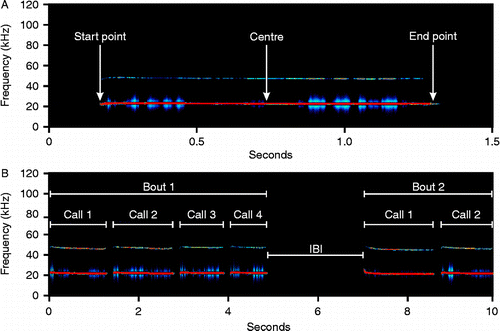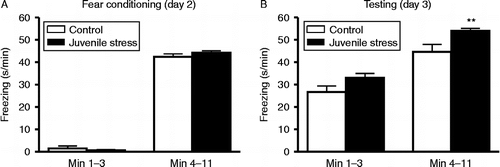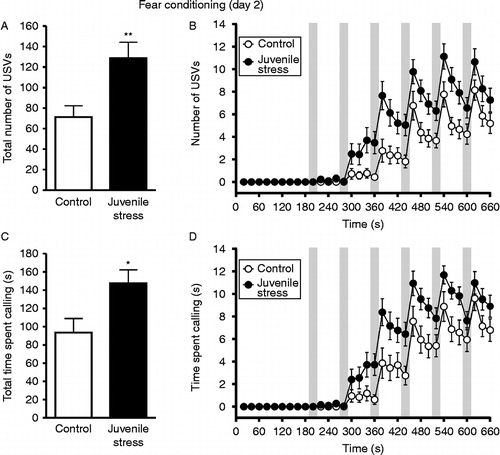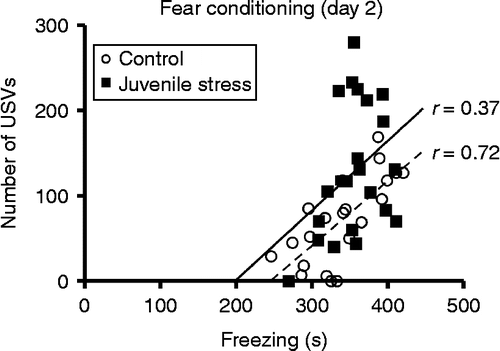Figures & data
Figure 1. (A) Spectrogram of an exemplary call with the three points where peak amplitudes and frequencies were measured. These parameters were also derived from the average spectrum of the entire call (not depicted). (B) Spectrogram of two successive bouts of calls. Shown are examples for calls starting a bout (Call 1), calls within a bout (Calls 2–4), bouts (Bout 1 and Bout 2) and an inter-bout interval (IBI).

Figure 2. Time spent freezing (s/min) during fear conditioning and testing. (A) Freezing during 1–3 min (pre-shock period; left) and 4–11 min (tone+shock presentation; right) during fear conditioning (day 2). (B) Freezing during 1–3 min (context period; left) and 4–11 min (tone presentation+context phase; right) during testing (day 3). n = 21 control rats, 23 juvenile stress rats; **p < 0.01 compared with respective control group.

Figure 3. USVs on the day of fear conditioning (day 2). (A) Total number of vocalizations. (B) Number of USVs emitted over time (per 20 s time bin) during the course of fear conditioning. (C) Total time spent vocalizing. (D) Time spent vocalizing during each 20-s time bin over the course of fear conditioning. Grey boxes denote occurrences of CS/US presentation. USVs, ultrasonic vocalizations; n = 21 control rats, 23 juvenile stress rats; *p < 0.05, **p < 0.01 compared with control group; statistical differences are not shown in (B) and (D) for the sake of clarity.

Table I. Characteristics of USVs during fear conditioning.
Table II. Characteristics of USVs during fear conditioning according to their occurrence during CS/US presentation versus inter-stimulus interval phases.
Figure 4. Scatter plots showing individual relationships between USVs (total number of calls) and freezing (s) during 4–11 min on the day of fear conditioning (day 2). Regression lines: dotted line, control group; solid line, juvenile stress group. n = 21 control rats, 23 juvenile stress rats; r = correlation coefficient.
